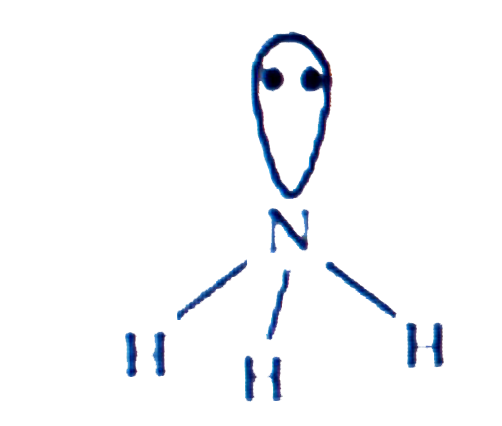What do you expect the nature of hydrides is, it formed by elements of atomic numbers 15,19,23 and 44 with dihydrogen? Compare their behaviour towards water.
Video Solution
Text Solution
The elements of atomic numbers 15, 19, 23, and 44 are nitrogen, potassium, vanadium, and ruthenium respectively.
(1) Hydride of nitrogen
Hydride of nitrogen (NH3) is a covalent molecule. It is an electron-rich hydride owing to the presence of excess electrons as a lone pair on nitrogen.
(2) Hydride of potassium
Dihydrogen forms an ionic hydride with potassium owing to the high electropositive nature of potassium. It is crystalline and non-volatile in nature.
(3) Hydrides of Vanadium and Ruthenium
Both vanadium and ruthenium belong to the d–block of the periodic table. The metals of d–block form metallic or non–stoichiometric hydrides. Hydrides of vanadium and ruthenium are therefore, metallic in nature having a deficiency of hydrogen.
(4) Behaviour of hydrides towards water
Potassium hydride reacts violently with water as: Ammonia (NH3) behaves as a Lewis base and reacts with water as:
Hydrides of vanadium and Ruthenium do not react with water. Hence, the increasing order of reactivity of the hydrides is (V,Ru)H<NH3<KH.

|
Topper's Solved these Questions
- HYDROGENBOOK - NCERTCHAPTER - HYDROGENEXERCISE - EXERCISE
36 Videos
- HYDROCARBONSBOOK - NCERTCHAPTER - HYDROCARBONSEXERCISE - EXERCISE
25 Videos
- ORGANIC CHEMISTRY- SOME BASIC PRINCIPLES AND TECHNIQUESBOOK - NCERTCHAPTER - ORGANIC CHEMISTRY- SOME BASIC PRINCIPLES AND TECHNIQUESEXERCISE - EXERCISE
40 Videos
Similar Questions
Knowledge Check
A binary compound formed between the elements with atomic numbers 19 and 17 is expected to be
Aa water soluble compound forming a conducting solution in waterBa soft, easily deformed solidCa solid with a low melting pointDan electrically conducting solid
What valency will be shown by an element having atomic number 15 ?
View SolutionHydrogen forms compounds with elements having atomic numbers : 9,11,12, 17 and 20 . What are their chemical formulae ? Compare their chemical behaviour.
View SolutionWhat will be the composition of the nucleus of the atom of an element with atomic number 19 and mass number 39?
View SolutionWhat will be the composition of the nucleus of the atom of an element with atomic number 19 and mass number 39?
View SolutionWhat is the number of chemical bonds that an atom of an element forms called ?
View SolutionWhat is the number of chemical bonds that an atom of an element forms called ?
View SolutionWhat is the number of chemical bonds that an atom of an element forms called ?
View Solution
